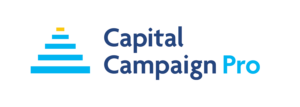How a Pre-Ask Meeting Sets Up a Successful Major Gift Ask

When you’re preparing to invite a major donor to make a campaign gift, there’s a critical step that too many nonprofits skip: the pre-ask strategy meeting.
This meeting happens after you’ve shared your campaign’s vision and various projects, but before you ask for a specific gift. It’s your opportunity to bring your donor “inside the campaign tent” and show them how you’ll reach your goal and where their support will have the greatest impact.
7 Steps to Conduct a Successful Pre-Ask Meeting
Here’s how to approach the pre-ask meeting so it’s both strategic and inspiring.
1. Set the Stage with Context
You might start out by saying something like:
“In past visits and conversations, we’ve shared what we hope to accomplish — a new shelter for unhoused teens in our community, for example — and why we know that goal to be urgent. [DONOR NAME], your enthusiasm in those conversations has been heartening and exciting for us to experience.
Of course, at some point in the future, we’d love to ask you to consider a gift for the new teen shelter, but before we get to that point, we feel it’s important to share more about how we’re approaching the campaign and what our path to success looks like. Our plan today is to dig into our campaign road map and hear your advice and reactions to some of the fundraising strategies we’re pursuing. Does that work for you?”
This kind of language accomplishes several things at once:
- It thanks and affirms the donor’s past enthusiasm.
- It clarifies that this is not an ask meeting, easing potential anxiety.
- It creates intrigue and inclusion by inviting them into the campaign’s “inside view.”
2. Share Your Campaign Roadmap
Once you’ve set the stage for the meeting, it’s time to share the big picture of how you’ll reach your goal. The campaign roadmap, also known as your gift range chart, helps donors visualize what success looks like and understand how gifts at every level fit into the overall plan. Use this as a teaching and listening moment, inviting their observations and insights as you walk through it together.
You might say:
“I’d love to walk you through what we call our campaign roadmap, which is essentially our gift range chart. This shows how we plan to reach our total goal by securing a certain number of gifts at different levels…”
Show the donor:
- The structure of the chart and how gift levels decrease as the number of gifts increases
- The size and number of leadership level gifts anchoring the campaign
- How the traditional top-down, inside-out approach builds momentum
- Where the remaining giving opportunities lie
Ask the donor:
- “As you look at this chart, what stands out to you?”
- “Where do you think we might find strong support for gifts at these levels?”
- “What do you think it will take to inspire people to step forward at the top levels?”
- “Have you ever been involved in a campaign like this before?”
This gives donors a tangible sense of scale and helps them start imagining where they might fit into the bigger picture.
3. Discuss Strategies for Success
After exploring the gift range chart, bring the donor even further inside the campaign by outlining how you’ll achieve your goal. Talk about the strategies, structures, and people driving the effort. This transparency builds confidence and gives donors a sense of belonging in the process, especially when you invite their thoughts on what’s working and where you might strengthen your approach.
You might say:
“Let me share a bit about how we’re approaching the campaign. We’re deploying strategies including…”
You might share:
- The sequence (and purpose) of distinct phases in your campaign
- The roles of volunteer leaders and campaign ambassadors
- How you’re identifying and engaging new prospects
- The use of flexible giving vehicles and multi-year pledge periods to help donors stretch
Ask the donor:
- “Does anything surprise you about how the campaign is structured?”
- “What part of this plan feels most important or exciting to you?”
- “Are there opportunities or challenges you think we should be aware of?”
- “What advice would you give us in this current phase? What about in the next phase?”
By sharing this level of planning, you invite your donor into the campaign’s inner circle, a position most major donors appreciate and value.
4. Highlight the Power of Gifts at Every Level
Next, help your donor see the energy that comes from early leadership gifts, and how those commitments create ripple effects across the community. This part of the conversation is about inspiration and impact, showing that every gift, no matter the size, contributes meaningfully to momentum and success.
You might say:
“One thing we’ve learned is how much early leadership gifts set the tone for everything that follows…”
Your might share:
- Donor stories and the impact of early investments
- Stories of donors who’ve stretched for the campaign
- A confidential list of early campaign supporters (with permission from those donors, of course)
This turns the conversation from how much money you need to how leadership gifts inspire others and drive success.
Ask the donor:
- “Can you think of anyone else we should be talking to about this campaign?”
5. Share Key Timelines and Deadlines
Context is powerful. By sharing important campaign milestones, upcoming events, and key deadlines, you give donors a sense of timing and purpose. This helps them understand when their potential commitment could be most influential and builds anticipation for the exciting work ahead.
You might say:
“Let me also share what lies ahead in our timeline…”
You might share:
- Launch events
- Matching gifts or challenge deadlines
- Board giving milestones
- Project milestones tied to funding thresholds
A sense of timing helps donors understand both urgency and opportunity. They’ll begin to see when and how their commitment could be most catalytic.
6. Invite Questions and Feedback
This meeting should feel like a two-way conversation, not a presentation. Encourage questions, welcome feedback, and listen carefully to what your donor shares. Their input will give you valuable clues about their level of interest, readiness, and alignment with the campaign’s goals.
You might say:
“We’d really love to hear your reactions. How does this plan strike you? Are there opportunities you see that we might be missing?”
You might ask:
- “Do you see challenges we might be overlooking?”
- “How does this compare to other campaigns you’ve been involved with?”
Their input will help you tailor your eventual ask, both in amount and in approach.
7. End with Gratitude and a Clear Next Step
As you wrap up, thank your donor for their time, their candor, and their partnership in helping move the campaign forward. Summarize what you discussed, share how much you value their insights, and ask for a solicitation meeting if that is the right next step.
You might say:
“Thank you for taking the time to talk this through with us. Your input and encouragement mean a lot. Now that you have the context of our campaign strategy, would you be open to a follow-up conversation about the possibility of your support?”
Follow up promptly with a thank-you note that reiterates key points from the discussion and confirms your plan for the next meeting.
Conclusion: Engage Donors as Partners, Not Targets
When you share your roadmap openly, before you make the ask, you help donors feel like collaborators in success, not targets of solicitation.
Handled well, this meeting lays the groundwork for a solicitation that feels natural, respectful, and deeply rewarding for both you and your donor.
Free Campaign Checklist & Guide
Download our free capital campaign checklist and guide to learn exactly what’s required for each phase of your campaign.



Leave a Comment